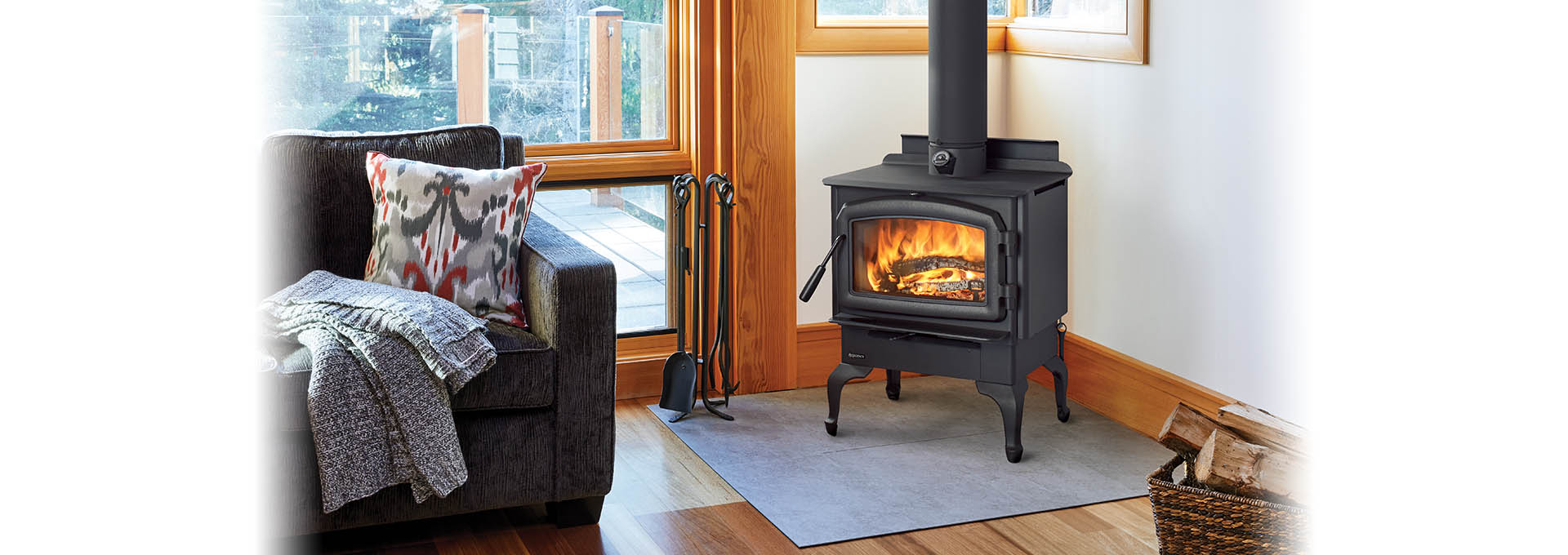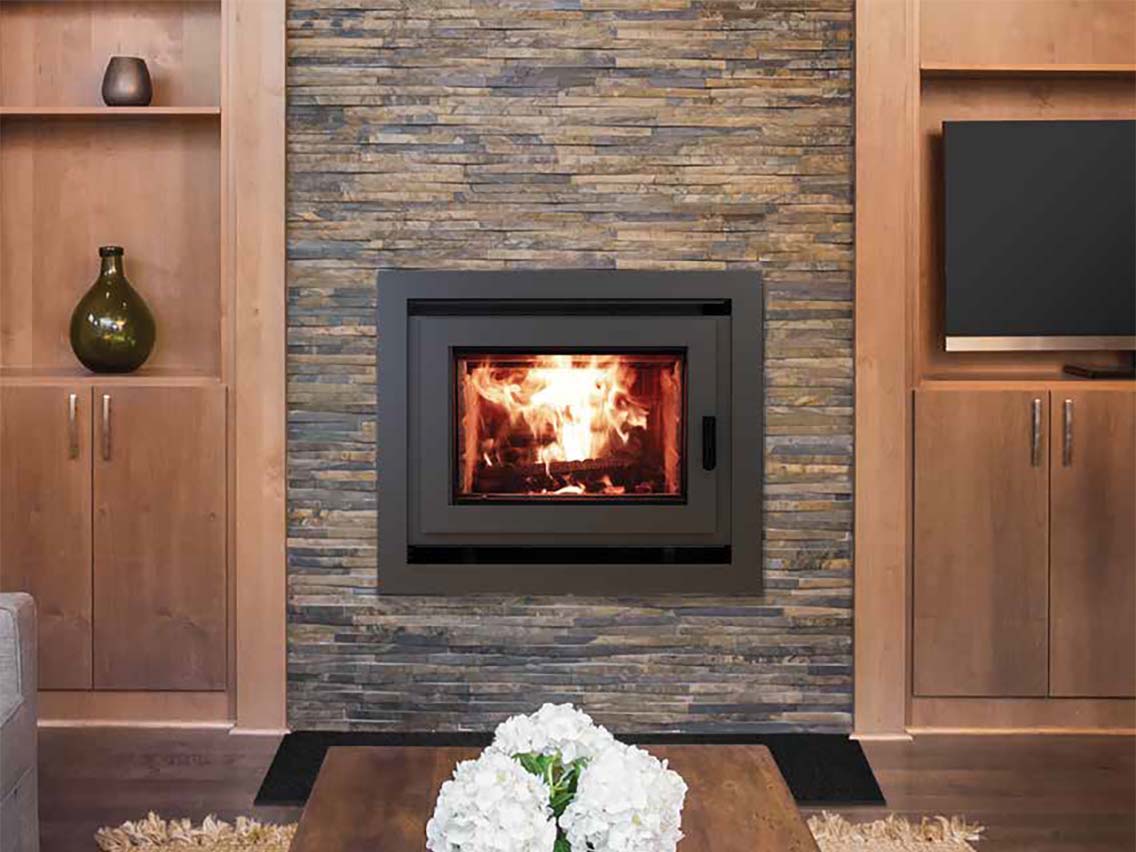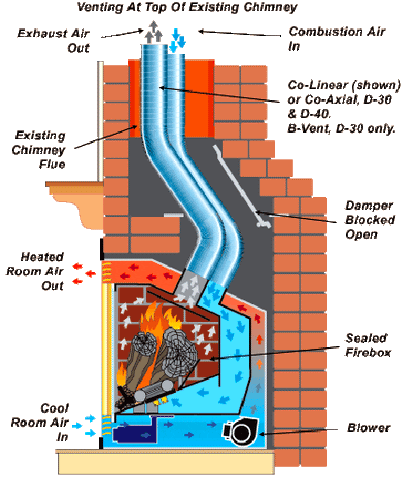A high-efficiency wood burning fireplace insert is designed to maximize heat output and minimize emissions. It efficiently burns wood to provide warmth and ambiance to your home, while reducing environmental impact.
This type of fireplace insert is a popular choice for those looking to increase energy efficiency and reduce utility costs. With its advanced combustion technology, it offers a cleaner and more efficient way to heat your living space. We will explore the benefits of a high-efficiency wood burning fireplace insert, its installation process, and how it can enhance the overall comfort and value of your home.
Additionally, we will discuss maintenance tips to ensure optimal performance and longevity of your fireplace insert. Whether you are considering an upgrade for your current fireplace or looking to add a new heating source, a high-efficiency wood burning fireplace insert is a worthwhile investment for any homeowner.

Credit: www.regency-fire.com
Benefits Of High-efficiency Inserts
Upgrade your traditional fireplace with a High-Efficiency Wood Burning Fireplace Insert for increased heat output and energy efficiency. Enjoy reduced fuel consumption and improved heating performance, creating a more sustainable and cost-effective home heating solution.
High-efficiency wood-burning fireplace inserts offer a range of benefits, making them an attractive option for homeowners seeking to enhance the efficiency and environmental friendliness of their home heating systems. From cost savings to reduced environmental impact, high-efficiency inserts can provide a range of advantages. Let’s take a closer look at the benefits of these inserts.
Cost Savings
High-efficiency wood-burning fireplace inserts can lead to significant cost savings for homeowners. By burning wood more efficiently, these inserts produce more heat using less fuel, ultimately reducing heating bills. Additionally, the improved combustion process can result in less frequent cleanings and maintenance requirements, saving both time and money over the long term.
Environmental Impact
In addition to cost savings, high-efficiency fireplace inserts also have a positive environmental impact. By burning wood more completely and efficiently, these inserts produce fewer emissions and pollutants, reducing their overall environmental footprint compared to traditional open fireplaces. This can contribute to better air quality and reduced carbon emissions in the local environment, supporting a greener and more sustainable approach to home heating.
In conclusion, high-efficiency wood-burning fireplace inserts offer homeowners the distinct advantages of cost savings and reduced environmental impact, making them a compelling choice for those looking to enhance their home heating systems while minimizing their ecological footprint.

Credit: www.regency-fire.com
Factors To Consider Before Installing
Before you invest in a high-efficiency wood burning fireplace insert, consider several important factors to ensure you make the right choice for your home. By carefully evaluating these factors, you can optimize the performance and efficiency of your fireplace insert while also ensuring it seamlessly integrates with your existing setup.
Existing Fireplace Compatibility
When considering the installation of a high-efficiency wood burning fireplace insert, compatibility with your existing fireplace is crucial. Evaluating the dimensions and condition of your current fireplace will determine if it can accommodate the insert and whether any modifications are necessary. Additionally, verify that your chimney meets the necessary requirements for venting the new insert.
Size And Heating Capacity
The size of the insert should align with the dimensions of your fireplace opening, ensuring a proper fit. It’s essential to accurately measure the opening to select an insert that provides an ideal seal without compromising safety. Evaluating heating capacity is equally important, as it determines the ability of the insert to effectively heat the space it’s intended for.
Installation Process
Installing a high-efficiency wood-burning fireplace insert involves specific steps to ensure proper functionality and safety. The Installation Process can be broken down into two main components: Preparation Steps and Insert Installation.
Preparation Steps
- Clear the Area: Make sure the area around the fireplace is clear of any obstructions or flammable materials.
- Inspect the Chimney: Check the condition of the chimney to ensure it is clean and in good working order.
- Gather Tools: Collect all the necessary tools and materials required for the installation.
Insert Installation
- Position the Insert: Carefully position the fireplace insert into the existing fireplace opening.
- Connect the Venting: Connect the venting system to the fireplace insert to ensure proper ventilation.
- Secure the Insert: Secure the insert in place following the manufacturer’s instructions.
By following these steps, you can successfully install a high-efficiency wood-burning fireplace insert in your home.
Maintenance And Care
Regular maintenance and care are crucial for optimizing the performance and longevity of a high-efficiency wood-burning fireplace insert. Cleaning the glass, inspecting gaskets, and scheduling professional inspections can ensure efficient and safe operation. Proper maintenance enhances the overall heating experience and reduces the risk of potential issues.
When it comes to keeping your high-efficiency wood burning fireplace insert in top-notch condition, regular maintenance and care are essential. By investing a little time and effort into cleaning, inspecting, and performing necessary upkeep, you can ensure that your fireplace insert operates efficiently and extends its lifespan. In this section, we will cover some important aspects of maintenance and care, including cleaning tips and the importance of annual inspections.
Cleaning Tips
Regular cleaning is crucial for maintaining the performance and appearance of your high-efficiency wood burning fireplace insert. Here are some effective cleaning tips to keep in mind:
1. Remove Ash and Debris: Use a small, heat-resistant shovel or vacuum designed for fireplace use to remove ash and debris from the firebox. Dispose of the ash safely and ensure the area is clean before proceeding with further cleaning.
2. Clean the Glass Door: Over time, the glass door of your fireplace insert may become sooty and lose its clarity. Use a fireplace glass cleaner and a non-abrasive cloth to gently wipe away the soot and restore the glass’s transparency. Be sure to follow the manufacturer’s instructions for cleaning the glass.
3. Clear Out the Chimney: Keep your chimney free from creosote buildup by having it professionally cleaned at least once a year. Creosote buildup not only reduces the efficiency of your fireplace insert but also poses a fire hazard.
4. Inspect and Clean the Chimney Cap and Damper: Check the chimney cap and damper to ensure they are free of debris and functioning properly. Regularly cleaning the venting system helps prevent blockages and ensures proper airflow.
Annual Inspections
Performing an annual inspection is vital for the safety and efficiency of your high-efficiency wood burning fireplace insert. Consider hiring a certified chimney sweep or professional technician to conduct a thorough inspection. Here’s what an annual inspection typically covers:
1. Check for Structural Issues: A professional will examine the firebox, chimney, and flue liner for any signs of damage or structural problems. This includes cracks, loose bricks, or deteriorated mortar that may compromise the safety of your fireplace insert.
2. Evaluate the Hearth and Surroundings: The inspector will assess the condition of the hearth and the space surrounding your fireplace insert. It is important to ensure that the protective materials are intact and positioned correctly.
3. Test Ventilation and Airflow: The inspector will verify that the ventilation and airflow systems are working optimally. This includes checking the chimney cap, damper, and chimney draft.
4. Identify Maintenance Needs: During the inspection, any necessary maintenance, repairs, or upgrades will be identified and discussed with you. Following these recommendations helps keep your fireplace insert operating efficiently and prevents potential issues down the line.
Remember, proper maintenance and care of your high-efficiency wood burning fireplace insert will not only enhance its performance but also provide you with a safe and enjoyable experience. By following these cleaning tips and scheduling annual inspections, you can ensure that your fireplace insert remains in excellent condition for years to come.
Tips For Maximizing Efficiency
When it comes to using a high-efficiency wood burning fireplace insert, there are a few key tips to keep in mind. By following these guidelines, you can ensure that you are getting the most heat and efficiency out of your insert, while also minimizing your impact on the environment.
Optimal Burning Techniques
Using optimal burning techniques is crucial for maximizing the efficiency of your wood burning fireplace insert. Here are a few tips to help you get the most out of each fire:
- Choose the right type of wood: Hardwoods like oak and maple burn longer and produce more heat compared to softwoods like pine.
- Split and stack your wood properly: Splitting wood into smaller pieces and stacking them in a dry, well-ventilated area will ensure that it burns more efficiently and produces less smoke.
- Season your wood: Allow the wood to season for at least 6-12 months before burning it. This will reduce the moisture content and make it burn more efficiently.
- Start with small fires: Begin with smaller fires and gradually add larger pieces of wood. This will help the fire reach its full efficiency and prevent excessive smoking.
- Use a mix of wood sizes: Use a combination of smaller and larger wood pieces to ensure a steady and efficient burn.
- Keep the damper open: Make sure the damper is fully open during the entire burning process to allow for proper airflow and optimal combustion.
- Regularly clean the insert: Remove ashes and debris from the insert regularly to maintain proper airflow and prevent any build-up that can reduce its efficiency.
Using The Insert Properly
Using the high-efficiency wood burning fireplace insert properly is equally important in maximizing its efficiency. Consider the following tips:
- Use a fire-resistant hearth rug: Place a fire-resistant rug in front of the insert to protect the flooring from sparks and embers, ensuring both safety and efficiency.
- Position the insert correctly: Install the fireplace insert in a central location for better heat distribution throughout the room.
- Keep the doors closed: During operation, keep the doors of the insert closed to prevent heat loss and maintain a steady and efficient burn.
- Control the airflow: Adjust the air controls on the insert to regulate the amount of oxygen entering the firebox, optimizing the combustion process.
- Consider using a blower: A blower or fan installed in the insert can help distribute heat more efficiently throughout the room.
- Monitor smoke levels: Excessive smoke indicates an inefficient burn. If you notice high levels of smoke, make adjustments to improve combustion.
By following these tips for maximizing efficiency, you can enjoy the warmth and comfort of a high-efficiency wood burning fireplace insert while also reducing energy consumption and contributing to a greener environment.

Credit: astria.us.com
Frequently Asked Questions Of High-efficiency Wood Burning Fireplace Insert
What Type Of Fireplace Insert Is Most Efficient?
The most efficient type of fireplace insert is a direct vent gas fireplace. It provides the highest level of heat output and energy efficiency. These inserts draw air from outside and vent exhaust outside, making them more efficient than traditional wood-burning fireplaces.
What Is The Best Wood-burning Fireplace Insert?
The best wood-burning fireplace insert varies depending on individual needs, but top options include brands like Napoleon, Englander, and Osburn. Look for high efficiency and durable construction for optimal performance.
What Is The Most Efficient Built In Fireplace?
The most efficient built-in fireplace is one that uses a direct venting system, as it draws in outside air for combustion and expels fumes outside. This design ensures maximum heat output and minimizes energy wastage.
What Is A High Efficiency Wood-burning Fireplace?
A high efficiency wood-burning fireplace is a fireplace that is designed to burn wood more efficiently, producing more heat while using less wood. It is a great option for those who want to enjoy the warmth and ambiance of a wood-burning fireplace without wasting energy or contributing to air pollution.
Conclusion
Upgrade your home with a high-efficiency wood-burning fireplace insert. Experience warmth and energy savings. Transform your space into a cozy retreat. Enhance your ambiance with a stylish and eco-friendly heating option. Embrace the comfort and efficiency of a modern fireplace insert.
Boost your home’s value and lifestyle.


